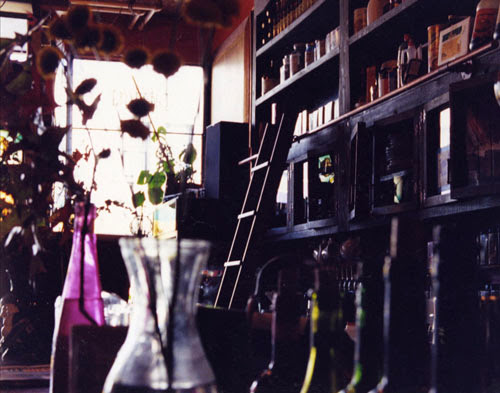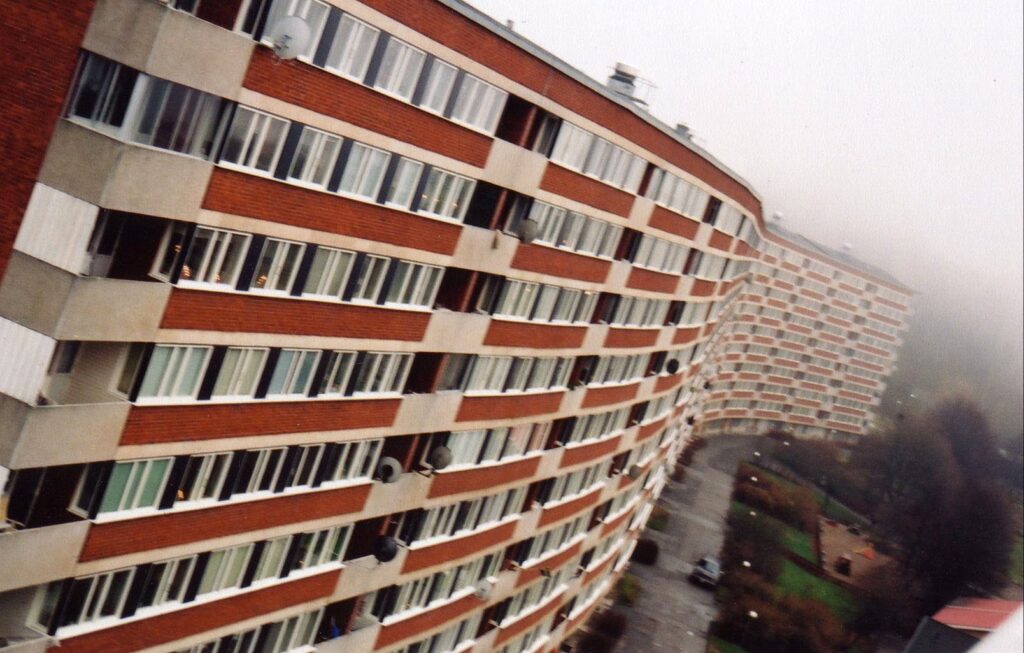I’m often asked about the backstory of Pedestrian Space -a bit of which I shared in the 1st Pedestrian Space Newsletter this past May. T
here’s more to the story though (not all of which I even will cover here) so I decided to use my Thursday mid-morning coffee break for a bit of storytelling and reflection. ☕

I grew up very car-dependent in the suburbs of southern California and aside from summer family trips to Malmö, Sweden, wasn’t familiar with walkable urbanism in a daily lived sense.

I graduated with a BA in Psychology from the University of Hawaii at Hilo on the beautiful and dynamic island of Hawai’i (black sand beaches!) and after I graduated, moved to Seattle for my first job out of university.
I moved into an apartment in the University District. I had no car and no money nor interest in buying one. I had a couple jobs- one I could walk to and the other which I had a couple of efficient bus routes to choose from.
On the weekends I took simple pleasure in being able to walk to my local farmer’s market (held in the parking lot right on my block) and move all around the city by foot.
It was then that I really learned how much I loved and valued being able to weave movement so deeply into my daily routine.

Pedestrian Space was a perfect port for me to anchor- not only my deep appreciation of walkable urbanism but also document and explore the deep connection between mental / physical / emotional health and movement and how our environments facilitate (or hinder) this need.
Annika Lundkvist

It was also during this chapter that I got into photography, mainly focused on buildings and city spaces. I could spend a whole Saturday photographing historic brick buildings in Pioneer Square, sidewalks and the nooks and crannies of the city.


It wasn’t long before I was thinking of going back to school and by the turn of the year was packing up to move to Sweden, where I would go straight into a 6-month intensive Swedish course in the wonderful university town of Lund. I also took a course in Environmental Psychology at Lund University School of Architecture as I researched my options.

I loved living in Lund. I lived in student dorms in the suburbs and biked into the heart of the medieval town each morning for class. It was a short, enjoyable commute and after class fellow students would gather in cafes to study and socialize. I would often go to the local library to rent some jazz cd’s before heading back home for the evening (often also stopping by the swim hall for some swim exercise). Lund is a perfect little 15-minute city (maybe even more like a 10-minute city if we are just looking at the city proper and immediate suburbs).

By Summer that year I was moving to Stockholm to begin an International Master’s in Spatial Planning with a focus on Built Environment at KTH Royal Institute of Technology. The cohort of students from around the world was dynamic as was the program. I lived deep in the suburbs for several months, commuting from Masmo on the red subway line. It was a long commute and I often used it to work on course reading and projects.




Pedestrian Space is a place to naturally integrate my academic and multi-disciplinary training and approach to issues of urban planning and the built environment along with my many and diverse memories of relying on different modes of transport.
ANNIKA LUNDKVIST


I later lucked out with finding a room for rent in a historic water tower at Mosebacke Torg in Södermalm (the buzzing southern neighborhood of Stockholm city) and my commute was drastically reduced. My social life also changed as I was now so centrally based in the city and I also got a great part-time job in Vasastan. I loved my dynamic urban days and moving around by foot and public transit.

My thesis for my first MA program was on Underground planning and architecture, with some focus as well on Underground pathways. I didn’t know the term ‘walkability’ back then but it was quietly woven in my work and absolutely a value I had for places I lived.

I went on to live for a bit in Berlin, experiencing the walkability and diverse public transit of Germany’s capital and then onto the vibrant northern Norwegian city of Tromsø to study an Arctic culture and history program at the University of Tromsø, the world’s northernmost University.
I volunteered at the student concert and culture house, located in downtown Tromsø and walking back home to student housing on the periphery of the city in the inky depths of the Nordic winter nights, I would be privy to extraordinary displays of Aurora Borealis.
‘Walkability’ was not yet part of my vocabulary those days, but I recall observing and being impressed by how physically active residents of the northern Norwegian university and port town were through all seasons.

….walking back home to student housing on the periphery of the city in the deep dark winter nights, I would be privy to extraordinary displays of Aurora Borealis.
ANNIKA LUNDKVIST


Later I would head back to the Big Island before heading to Cornell University for my 2nd Master’s in Historic Preservation Planning.
Once again, I got to experience the benefits of a really walkable university town, this time in upstate New York. Ithaca has great DNA for a 15-minute city and I loved feeling fit in my mind and body with a rigorous exciting course schedule and being able to walk everywhere I needed to go (occasionally using the bus if I had a lot to carry).


There were many moves after this and I didn’t actually go into planning professionally. I married an officer in the US Army and years later, while stationed in the rural hinterlands of southern Germany, my love and skills with photography turned into freelance work.
In the coming years, my focus would largely be on photography, media and content creation for digital and print publications. I often say that ‘media and motherhood‘ has been my focus for the last several years, along with numerous, interesting family moves.

When I set up @pedestrianspace two years ago in May 2020, I was living in Örebro, Sweden, a city I perceived as being chock full of textbook examples of walkable urbanism as well as a good model of a 15 minute city.
Later, as I set up this website in January 2021, all of these memories of lived experiences (and numerous ones not mentioned), memories or work experiences and academic programs rose up like puzzle pieces in my mind, ready to be fit. Pedestrian Space was the synthesis of all of this, a place to naturally integrate my academic and multi-disciplinary training and approach to issues of urban planning and the built environment along with my many and diverse memories of relying on different modes of transport. Pedestrian Space was a perfect port for me to anchor not only my deep appreciation of walkable urbanism but also document and explore the deep connection between mental / physical / emotional health and movement and how our environments facilitate (or hinder) this need.
Pedestrian Space also offers a continuous opportunity for me to create and share visual media on walkability- moments from my own life as well as more broadly, reflections on the community.

Earlier this week, as I wrote a recommendation letter for Architecture College for one of the youngest Correspondents of the Global Walkability Correspondents Network (and our first Correspondent in Ukraine), I had a truly ‘full circle’ moment, reflecting that 21 years ago I was just settling in to the Stockholm region about to embark on my own studies on the city and built environment.
The roots of Pedestrian Space are deep in my own memories and lived experience and reflecting on decades of life in various communities and how I moved through them is a vital part of the foundation for this entire project.
-Annika Lundkvist, Founder & Editor at pedestrianspace.org

